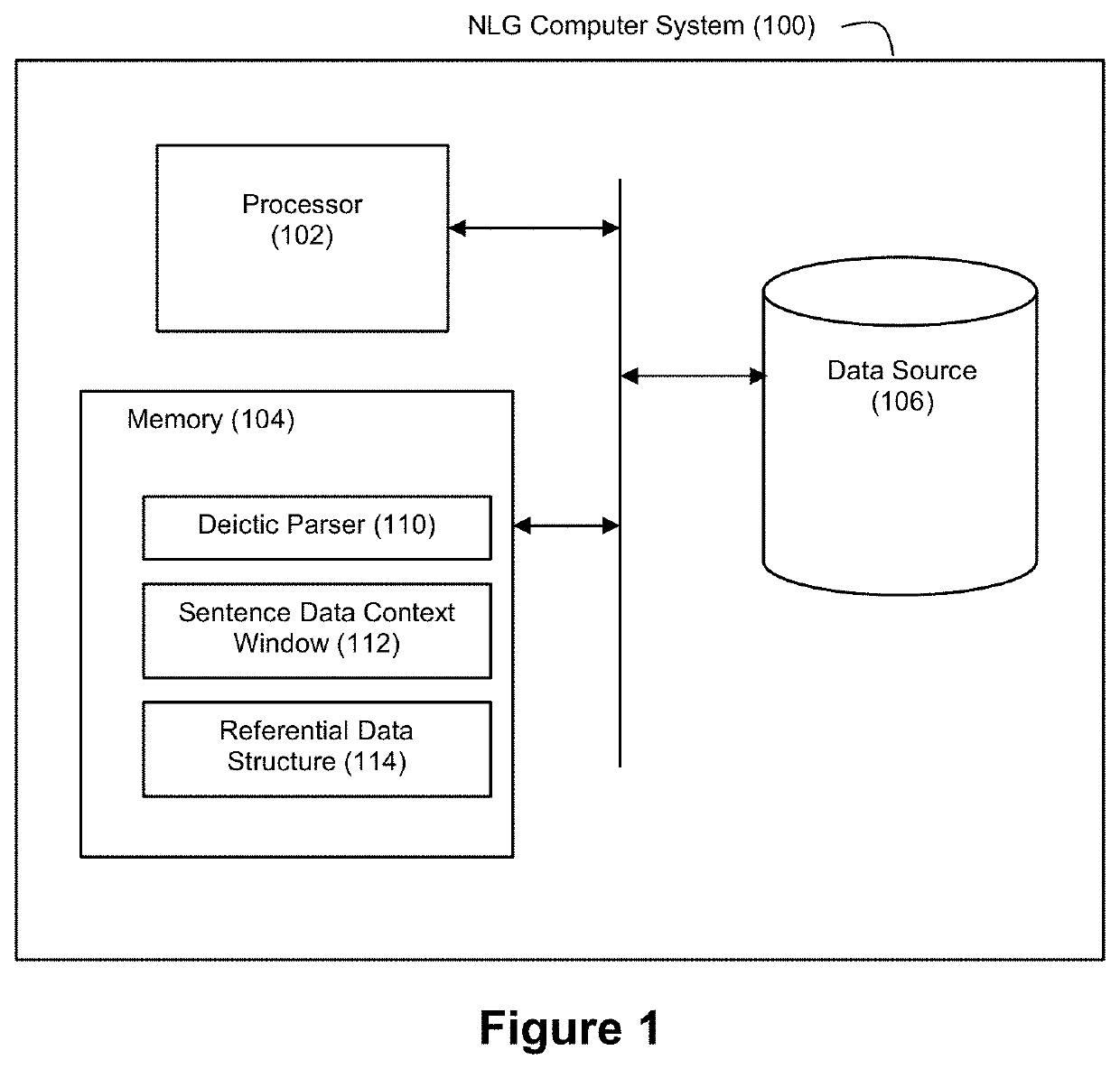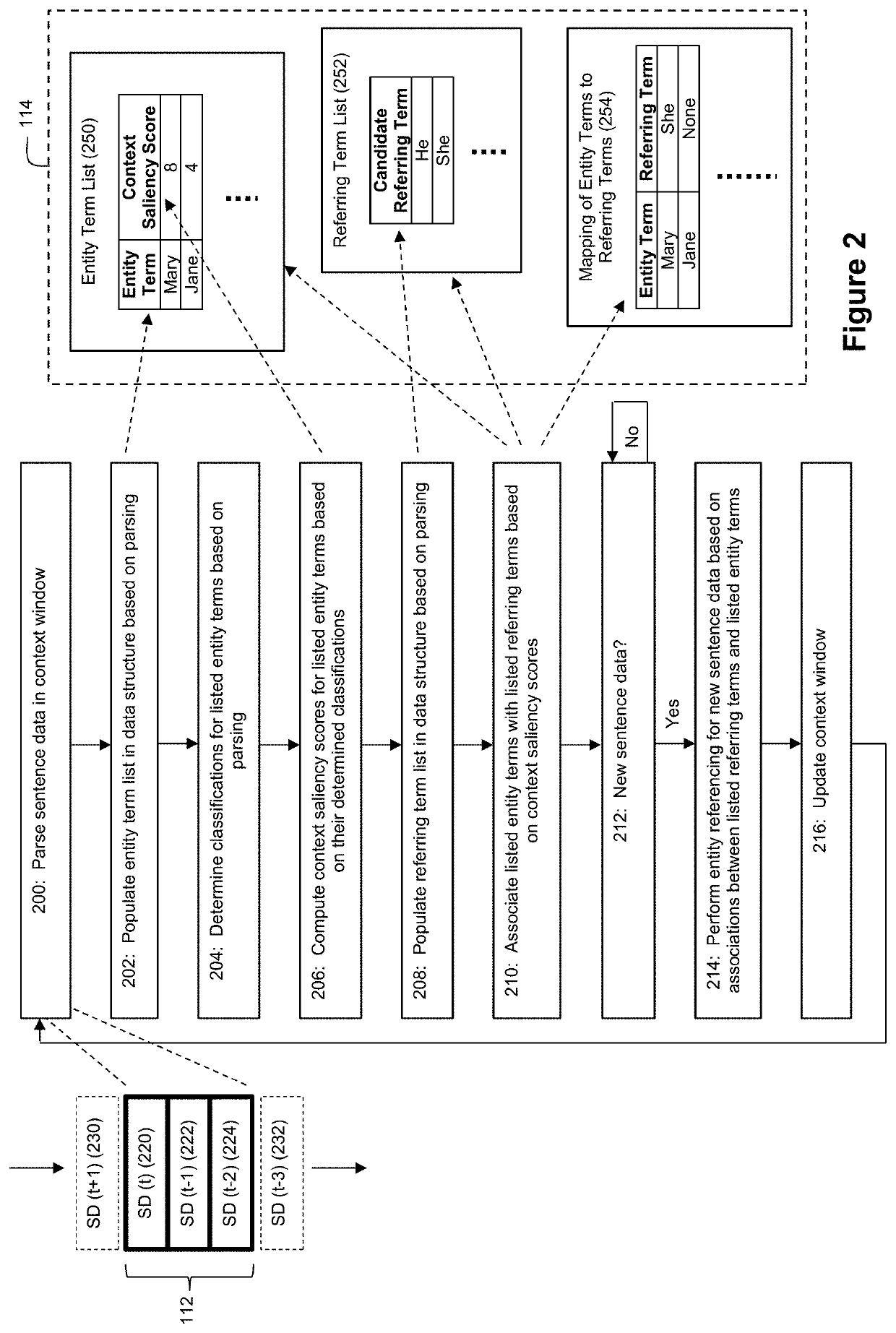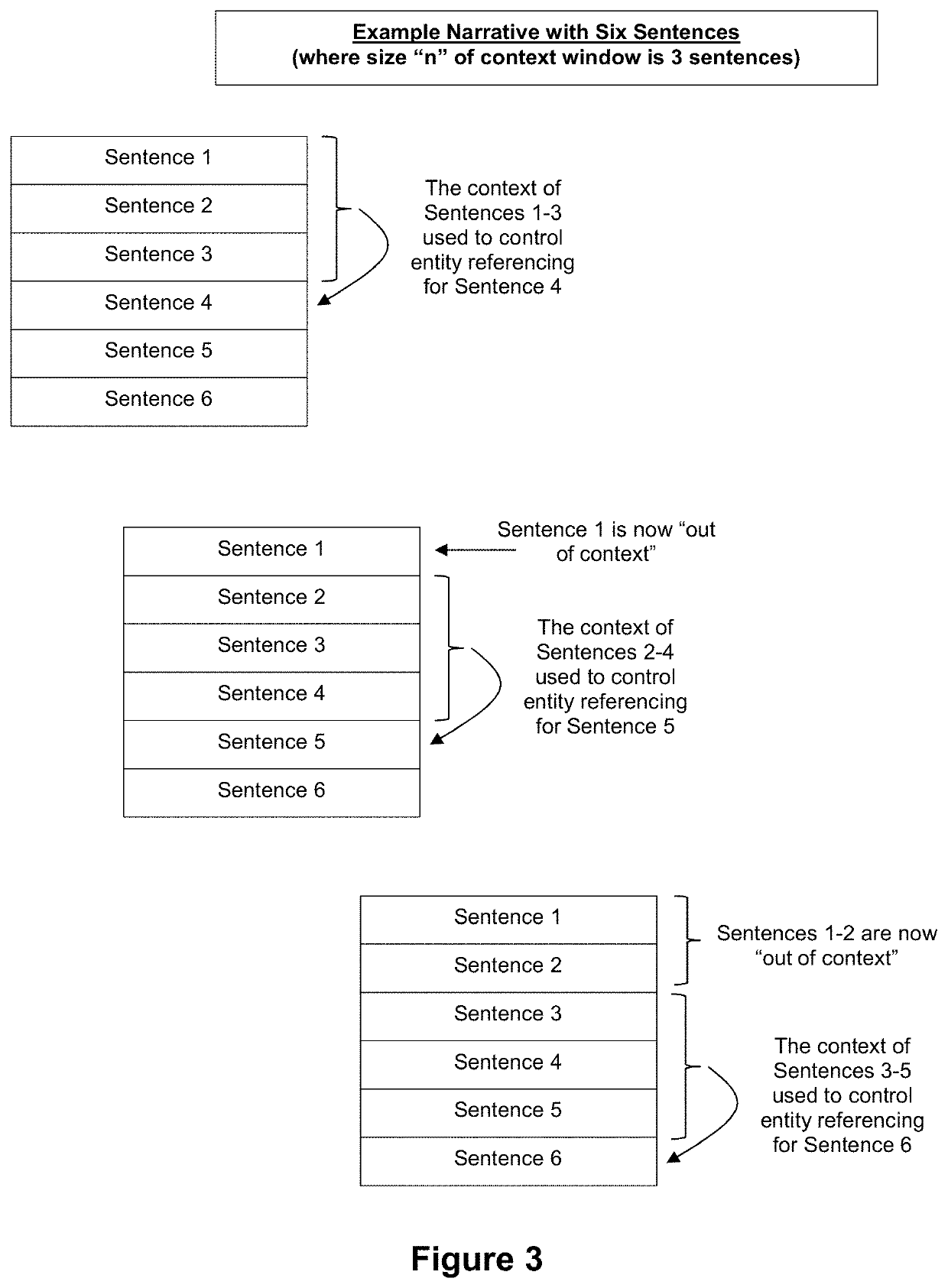Context Saliency-Based Deictic Parser for Natural Language Processing
a deictic parser and natural language technology, applied in the field of context saliency-based deictic parser for natural language processing, can solve the problems of overly simplistic and rigid conventional approach to entity referencing in the nlg system, computerized control, and complexity of the task of entity referencing in the nlg
- Summary
- Abstract
- Description
- Claims
- Application Information
AI Technical Summary
Benefits of technology
Problems solved by technology
Method used
Image
Examples
Embodiment Construction
[0031]FIG. 1 shows an example NLG computer system 100 in accordance with an example embodiment. The NLG computer system 100 comprises a processor 102, a memory 104, and a data source 106. The processor 102, memory, 104, and data source 106 can interconnected with each other in any of a variety of manners (e.g., via a bus, via a network, etc.) It should be understood that the NLG computer system 100 may include additional or different components if desired by a practitioner.
[0032]The processor 102 may comprise one or more processors such as general-purpose processors (e.g., a single-core or multi-core microprocessor), special-purpose processors (e.g., an application-specific integrated circuit or digital-signal processor), programmable-logic devices (e.g., a field programmable gate array), etc. that are suitable for carrying out the operations described herein.
[0033]The memory 104 may comprise one or more non-transitory computer-readable storage mediums, such as volatile storage medi...
PUM
 Login to View More
Login to View More Abstract
Description
Claims
Application Information
 Login to View More
Login to View More - R&D
- Intellectual Property
- Life Sciences
- Materials
- Tech Scout
- Unparalleled Data Quality
- Higher Quality Content
- 60% Fewer Hallucinations
Browse by: Latest US Patents, China's latest patents, Technical Efficacy Thesaurus, Application Domain, Technology Topic, Popular Technical Reports.
© 2025 PatSnap. All rights reserved.Legal|Privacy policy|Modern Slavery Act Transparency Statement|Sitemap|About US| Contact US: help@patsnap.com



